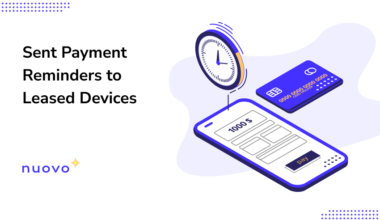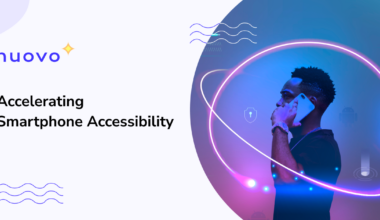When mobile phones were introduced to the retail market in 1983, their high price made them cost-prohibitive for most consumers, making them an item of luxury reserved for the privileged. In the following three decades, the cost of mobile devices and data plans have fallen steadily, especially in developed countries.
But there’s a circle of life in business and certain challenges repeat themselves. Although the cost per megabyte of mobile data plans around the world has dropped significantly, the same cannot be said for the cost of mobile phones.

Estimates show that the average price of smartphones in 2021 was to reach USD 317, 35 US dollars more expensive than the average selling price five years ago [*]. This suggests that buying a new smartphone at full price can still be a challenge for people across the world under different economic circumstances.
Today, smartphone financing companies are helping consumers to overcome high smartphone prices and own a smartphone flexibly and affordably. However, certain friction points exist that are slowing smartphone financing companies from realizing the promise of possessing a smartphone.
What is Smartphone Financing?
Smartphone financing allows consumers to make payments over time. Customers choose the mobile phone they would like to purchase and apply for financing. Post-approval, customers may need to pay a small down payment before acquiring the device.
Certain financing plans offer ‘zero-down payment’ options. Individuals can choose the payment schedule, usually between 6 months to 2 years or more, based on the financing company.
There are other players in emerging markets that also offer unique services, such as offering subsidies under government and non-profit programs. However, these services are often temporary and may not fulfill the long-term needs of the customers.
A credit card or a savings account may or may not be necessary, depending on the company from where customers plan to get their devices. Individuals may also need to meet additional qualifications to be eligible for a smartphone installment plan.
Smartphone financing is different from smartphone leasing. Device leasing allows customers to use smartphones for a set period of time, while financing allows them to own the phone at the end of the payment term.
Different Types of Smartphone Financing
- Mobile Network Company Financing
If customers plan to stick to their current wireless carrier in the near term, then buying a device through this channel is a reasonable option.
For example, When customers purchase a device with a Verizon device payment agreement [*], the retail price is divided into equal monthly installments that customers pay off over time rather than paying for it all upfront.
Unlike previous phone contracts, there is no service contract. So with the device payment program, customers can get a new device as soon as the device is paid off.
Such device payment programs without a contract and bundling deals such as TV, internet, and landline service are convenient in case customers decide to switch telecom operators.
- Smartphone Manufacturer Financing
Customers can also reach out to mobile phone manufacturers and get the device of their choice. Leading manufacturers like Samsung and Apple offer promotional financing for those customers who want to purchase the latest phones and pay over time.
For example, Samsung India provides device financing through its digital consumer lending platform, Samsung Finance Plus, to drive the adoption of premium smartphones with 5G technology.
“Samsung Finance Plus currently has around 20% share of consumer financing for smartphones…”
Raju Pulla, SVP, Samsung India
The additional benefit of such a type of financing is that customers can use the payment program to buy more than just smartphones. Consumers can buy TVs and other appliances offered by the brand of choice. However, companies offering such financing options may ask for a credit score and one-time, upfront fees.
- Buy Now Pay Later (BNPL) Financing
Buy now pay later (BNPL) allows mobile phone buyers to purchase devices and pay for them within a stipulated interest-free time period of 3 to 4 months. However, not all smartphone companies work with a BNPL provider and may limit buyers from this financing option.
This short-term financing option has drawn criticism. The caveat is that if a buyer fails to pay the amount within the agreed repayment window, the BNPL provider charges interest fees on the balance amount. Some providers may also charge late payment fees.
Some BNPL platforms do not require a credit score for short-term payment, but may need it for a longer financing plan.

Top Friction Points in Smartphone Financing
- Companies face the risk of bad debt under the smartphone financing model. A significant portion of the customers’ default payments during the course of the contract.
- Handset financing providers are hesitant to accept potential customers without a credit history. This situation is widespread in underdeveloped and developing nations. Because a significant portion of the lower-income customers have no access to formal financing or banking services, there is no record of past borrowing behavior.
- Lack of digitalization is also giving rise to poor financial performance in handset financing. Companies currently do not have an assurance mechanism that can protect their revenue against payment default or smartphone theft.
Managing Friction Points
To manage device investments, companies need a robust solution that can be deployed at speed and scale across multiple devices. With Nuovopay, smartphone financing companies can help customers send timely reminders on devices to minimize the chances of defaulting on the monthly payment.
In case of a payment default, companies can remotely block device access while maintaining basic mobile functionalities for emergency use – such as emergency calls. When customers can afford to make the payment, their smartphones can be remotely unlocked and are ready for use.
Although financing smartphones is a promising approach, providing affordable smartphones, especially in unregulated marketplaces, is a global challenge. Companies need to strike the right balance between enabling people and guarding the company’s financial performance.
Nuovopay’s smartphone locking technology helps companies derisk device financing while also supporting customers with no bank accounts or formal credit history to obtain a smartphone.
The device locking technology makes owning a phone an achievable reality instead of a pipedream. Plus, the non-intrusive nature of Nuovopay ensures smartphone owners of privacy and security.
Wrapping Up
By managing the friction points, smartphone financing providers can minimize their risks against payment defaults, protect their devices from device fraud, and improve cash flow by increasing consumer willingness to pay for gaining access to their phones.
To know more about Nuovovpay’s smartphone financing enablement features, book a complimentary demo.





